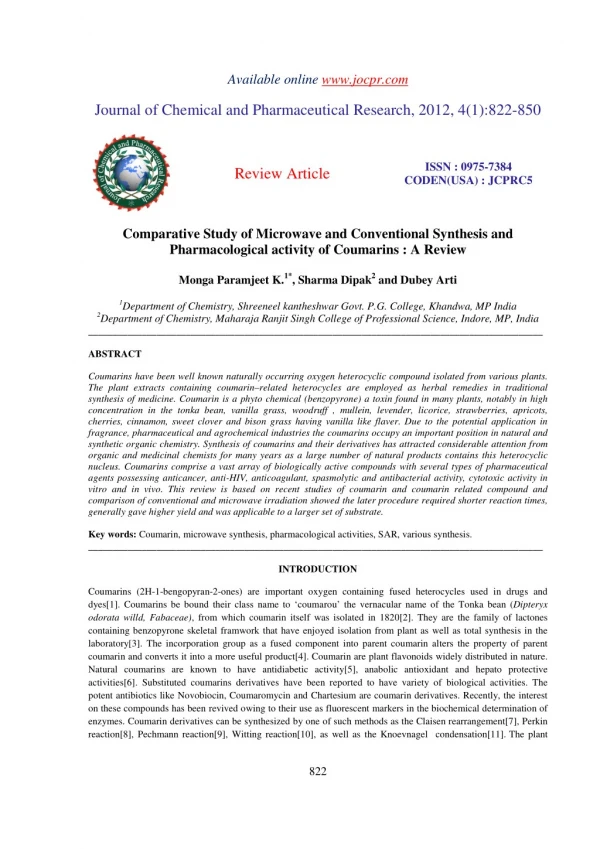Comparative Study of Microwave and Conventional Synthesis and Pharmacological activity of Coumarins : A Review
Coumarins have been well known naturally occurring oxygen heterocyclic compound isolated from various plants. The plant extracts containing coumarin–related heterocycles are employed as herbal remedies in traditional synthesis of medicine. Coumarin is a phyto chemical (benzopyrone) a toxin found in many plants, notably in high concentration in the tonka bean, vanilla grass, woodruff , mullein, levender, licorice, strawberries, apricots, cherries, cinnamon, sweet clover and bison grass having vanilla like flaver. Due to the potential application in fragrance, pharmaceutical and agrochemical industries the coumarins occupy an important position in natural and synthetic organic chemistry. Synthesis of coumarins and their derivatives has attracted considerable attention from organic and medicinal chemists for many years as a large number of natural products contains this heterocyclic nucleus. Coumarins comprise a vast array of biologically active compounds with several types of pharmaceutical agents possessing anticancer, anti-HIV, anticoagulant, spasmolytic and antibacterial activity, cytotoxic activity in vitro and in vivo. This review is based on recent studies of coumarin and coumarin related compound and comparison of conventional and microwave irradiation showed the later procedure required shorter reaction times, generally gave higher yield and was applicable to a larger set of substrate.
★
★
★
★
★
384 views • 29 slides



